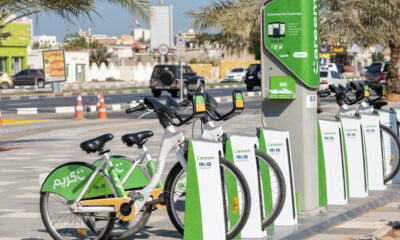

Features
A responsible tourist considers local communities
Travelling responsibly means that we think about the impact that our holidays have – not only on the environment, but also on local communities. Ahead of this bank holiday weekend, Ilaria Bertini takes a look at Easter Island, a remote island in the Pacific Ocean that is in a battle with western tourism.
We have often stressed the importance of sustainable tourism, encouraging readers to think more about the travelling decisions they make.
Flying half way across the world for eco-tourism experiences, emitting a large amount of CO2 in the process, or travelling to vulnerable regions such as the Antarctic, are just two of the moral challenges that a responsible tourist has to face, when deciding to go on holiday.
However, the environment and wildlife are not the only things we might impact on.
Local people and communities are also a crucial element that we need to consider before choosing where to travel. But the notion of sustainable tourism also addresses the protection of the people living in tourist ‘hotspots’ by making sure that the experience is positive both for the industry and for the locals.
Sometimes, the rights of native populations are often exploited by tourism and their livelihoods can be threatened by profit-driven developments that forget to take into account their circumstances.
This is exactly the case for the Rapa Nui people of the Easter Island – one of the most remote places in the world, located 3,512 kilometres off the coast of Chile.
The island has become a tourist attraction for its natural beauty and for the fascinating moai statues.
Despite the fact the native people have been relying on tourism for many years and have constantly welcomed visitors from abroad, they are fighting against the exploitation of their land by mass luxury tourism.
According to an Italian newspaper, in recent times 90,000 tourists visit the island, which is home to only 6,000 people, every year. It is an incredible divide for such an inaccessible place.
Chilean institutions control the island and have often sent police to repress demonstrations by the locals who claims the government is stealing their ancestors’ land.
The peaceful clashes have worried the United Nations. But the Rapa Nui people are not against tourism.
Luz Zasso Poa, mayor of the island’s capital Hanga Roa, told National Geographic that the land they have inherited from their ancestors is the base of their living. Tourism accounts for 80% of the total economy but at the same time it is destroying the island’s ecosystem.
If Chile succeeds in its plan to build a super luxury resort, the Rapa Nui people and their home could be in danger. And sadly, Easter Island is not the only place where an increasing flow of tourists might cause more harm than good.
Interacting with communities and cultural practices, contributing to local economies and especially choosing wisely where and how to travel, are some of the most important choices to should make when booking a holiday.
Sustainable tourism, after all, is nothing but respect for people and the planet, and above all, good common sense.
Further reading:
81% of tour operators and 75% of travellers say yes to more sustainable travel
UN emphasises ‘vital role’ of sustainable tourism
Sustainable tourism can help tackle the world’s biggest challenges, says UN official
Sustainable tourism labelled a ‘key trend’ by luxury travel network


 Environment10 months ago
Environment10 months agoAre Polymer Banknotes: an Eco-Friendly Trend or a Groundswell?

 Environment11 months ago
Environment11 months agoEco-Friendly Home Improvements: Top 7 Upgrades for 2025

 Features9 months ago
Features9 months agoEco-Friendly Cryptocurrencies: Sustainable Investment Choices

 Features10 months ago
Features10 months agoEco-Friendly Crypto Traders Must Find the Right Exchange




























